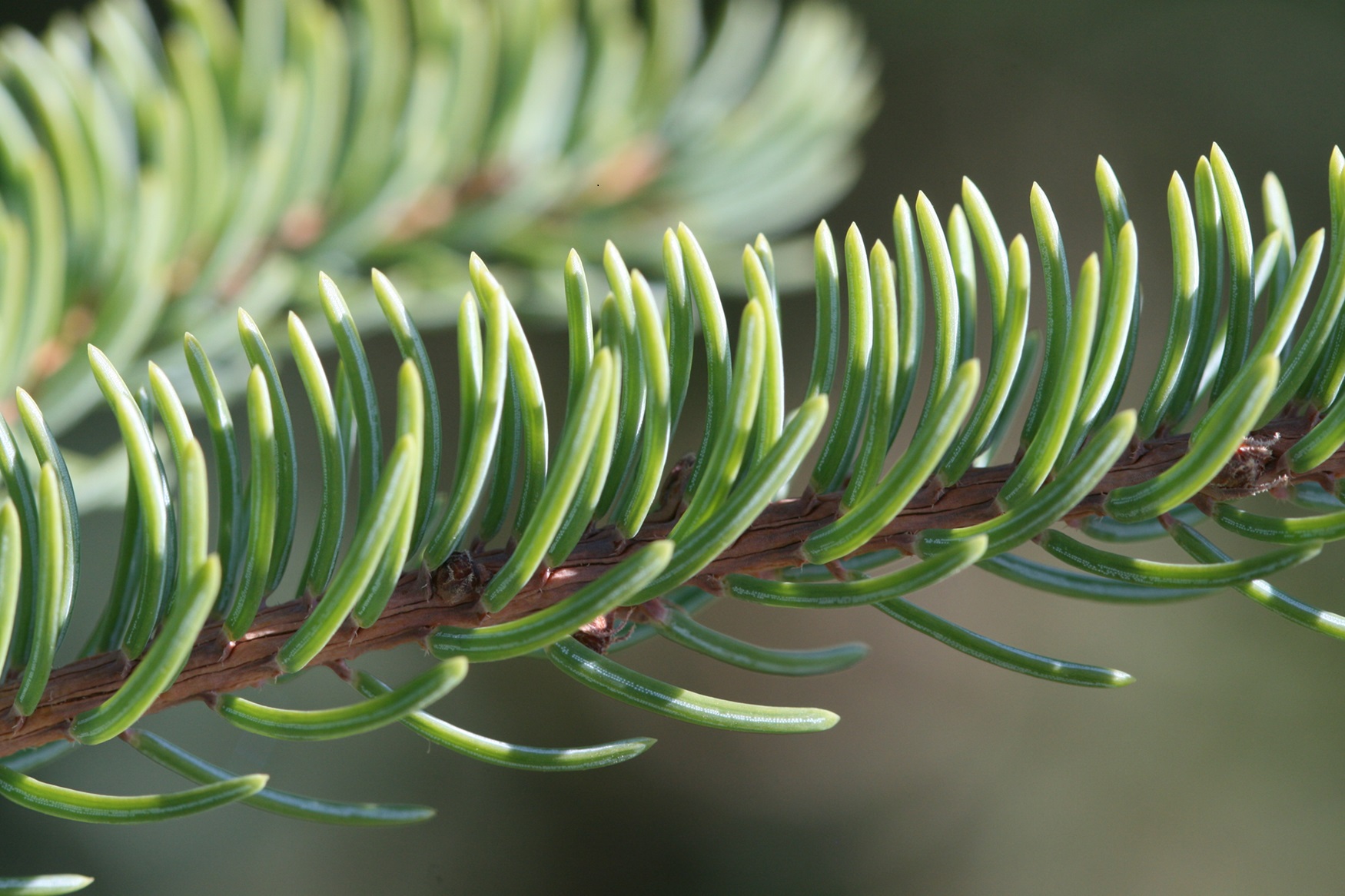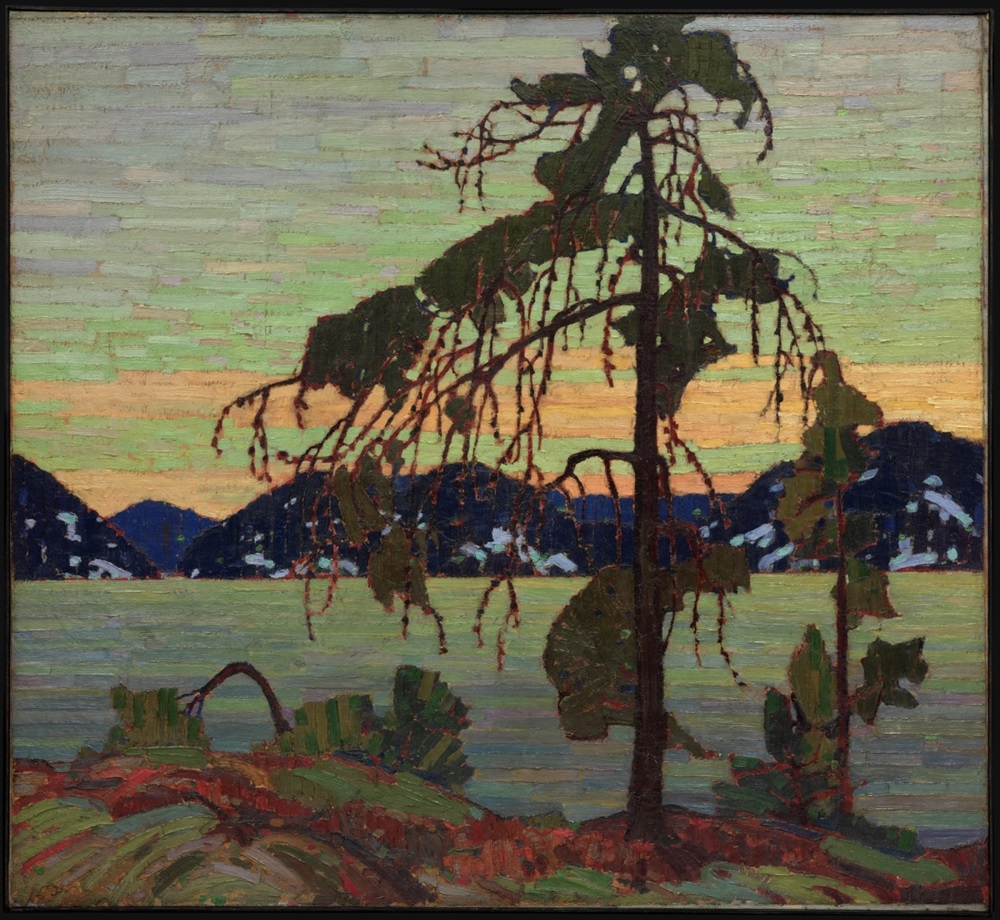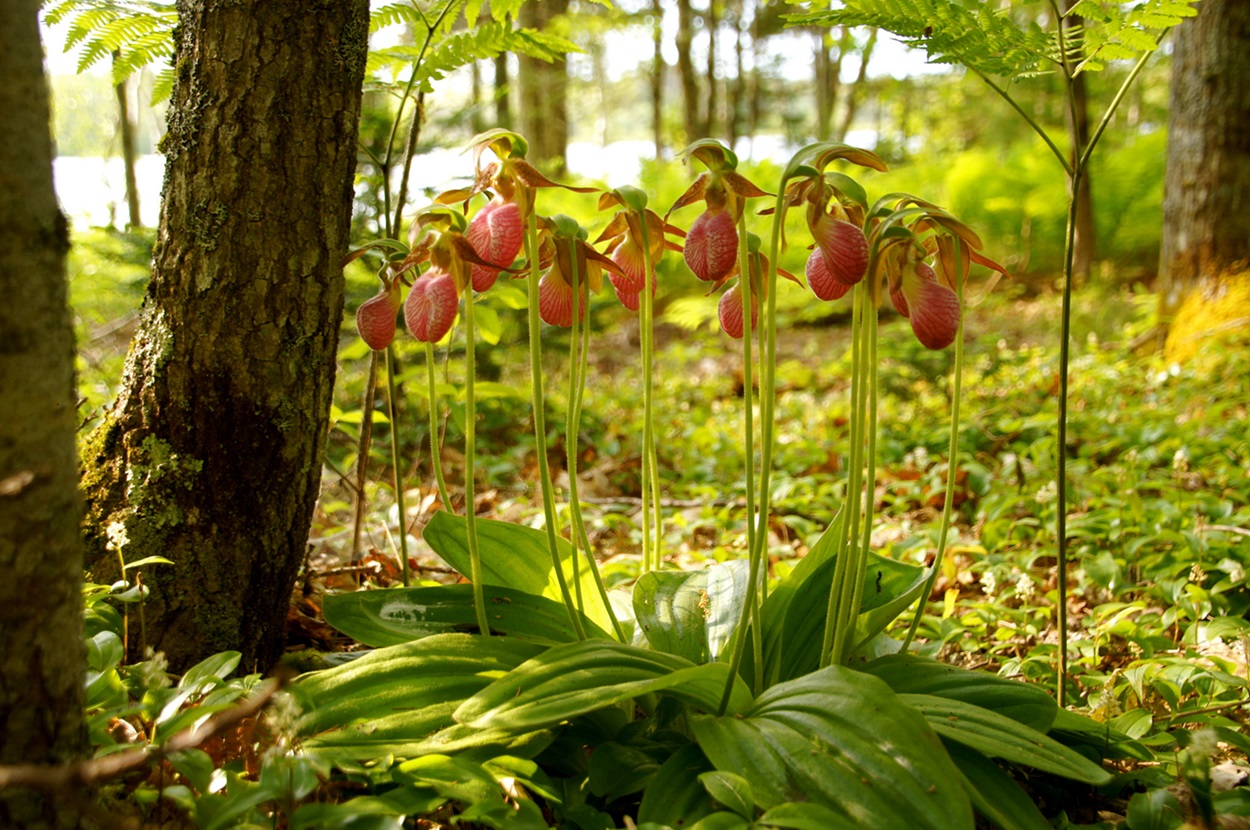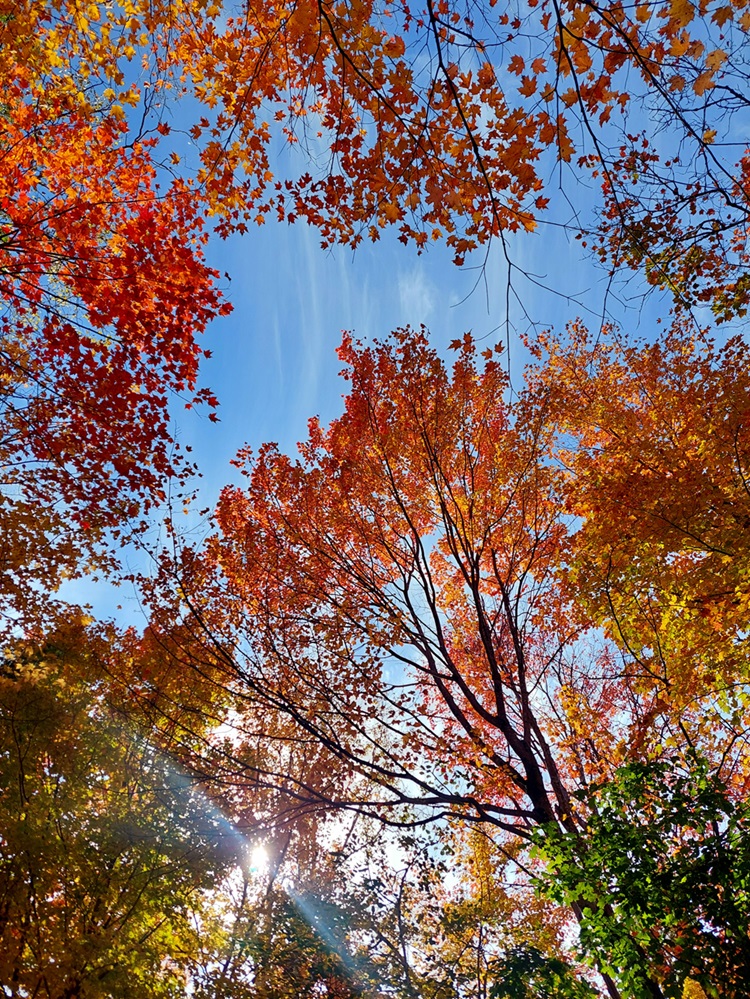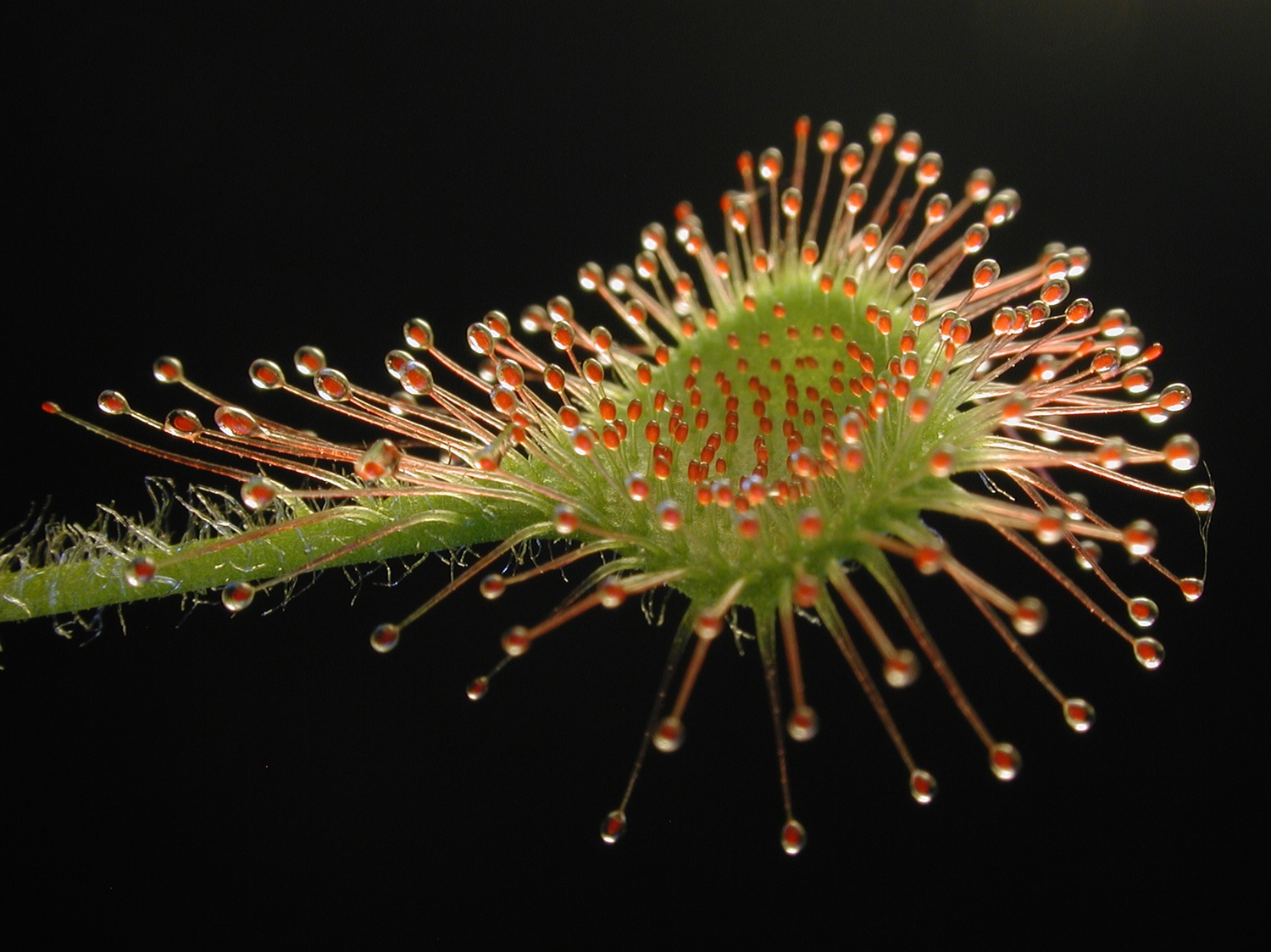The oak (Quercus) is a genus of trees and shrubs of the beech family (Fagaceae). Of the around 500 species found worldwide, 75–80 are native to North America and 12 to Canada. Canadian species largely grow locally in Ontario and eastward, except for the Garry oak, found only in British Columbia, and the bur oak, which occurs as far west as Saskatchewan. In Canada, oaks are usually divided into two groups: red oaks (northern red, Shumard, black, bear, pin and northern pin) and white oaks (white, Garry, bur, swamp white, chinquapin and dwarf chinquapin). These trees usually have lobed leaves of variable shapes and sizes. The acorns, produced in large quantities, are important to the diets of various wild animals.
Known for its strength and longevity, the oak has been the symbol of several peoples and is often referred to in literature. Prince Edward Island designated the northern red oak as its provincial tree. Known for its versatility and longevity, the oak is often referred to as “the tree of life.”
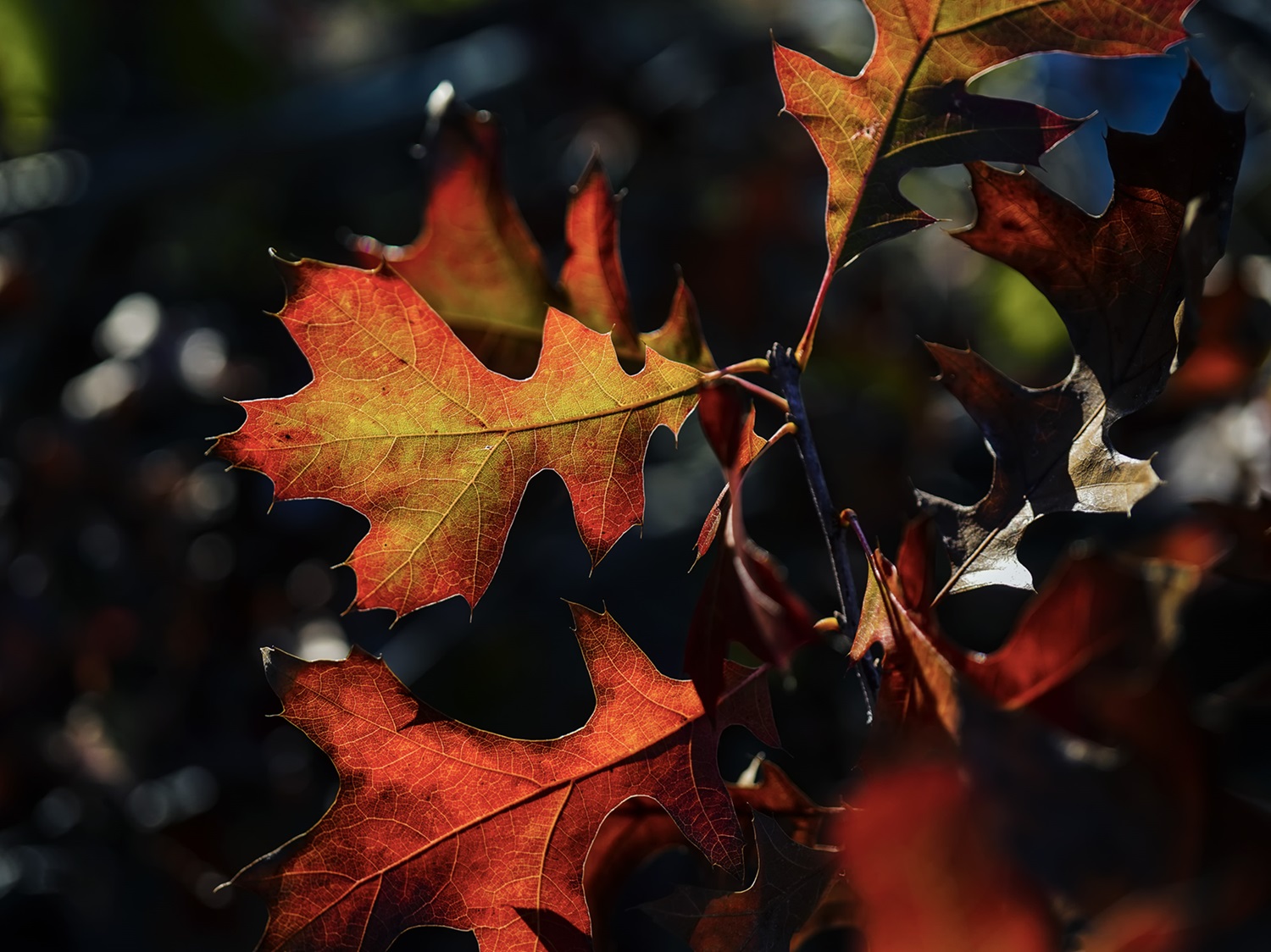
Canada’s Oak Trees
|
Species |
Description |
Habitat and Range |
|
Quercus garryana Garry oak |
The Garry oak, also known as the Oregon oak, has thick and stiff leaves, each with 5–7 rounded lobes. The leaves are dark green on the upper surface and yellowish-green below. During the fall, the leaves turn red as they prepare to fall off. The tree can grow to be about 20 m tall, with a short, scaly trunk and forked branches. They can live to be 200 years old. |
This is the only oak species native to British Columbia typically found on coastal Vancouver Island and the Gulf Islands. It can also be found dotted throughout the lower Fraser Valley but is more densely found along the west coast of the United States. |
|
Quercus shumardii Shumard oak |
The Shumard oak’s dark green leaves have 7–11 toothed lobes distinguished by deep notches. The underside of the leaves is pale, and the entire leaf turns bright red in the fall. The tree produces large acorns and has dark grey bark. They can grow up to 40 m tall. |
This species is only found in small areas in southern Ontario, north of Lake Erie. It is typically found in lowlands along streams and in poorly drained, heavy soils. It is classified as a species of special concern by COSEWIC. |
|
Quercus velutina Black oak |
The black oak grows broad leaves with 5–7 lobes. They are dark green on the upper surface and yellowish-brown underneath, turning yellow, orange and brown in the fall. The bark is dark grey when young, gradually becoming darker and more rigged with age. The tree’s acorns are small and round. Growing up to 20 m tall, the black oak can live up to 200 years. |
This tree is found in southern Ontario, north of Lake Erie and Lake Ontario. It grows best on dry, sandy soils and requires an abundance of sunlight. |
|
Quercus ilicipholia Bear oak |
Bear oaks are small, shrubby trees averaging 1 m in Canada but can grow to 6 m in the southern portion of their range. The leaves are small, with pointed lobes ending in a bristle tip. The bark is smooth and grey but becomes furrowed or scaly with age. |
Considered rare in Canada, bear oaks only occur in an 800 ha area in the Lennox and Addington County in central Ontario. Farther south, this species is found across the eastern seaboard of the United States. |
|
Quercus macrocarpa Bur oak |
The leaves of the bur oak vary in shape and size but are typically dark green on the upper surface and pale green on the lower surface. In the fall, the leaves turn bright orange and red. The acorns grow individually, with a bristled edge along the cup. With dark grey bark and a straight trunk, this tree grows to 15 m and can live up to 200 years. |
Reaching from the eastern edge of Saskatchewan to Prince Edward Island, the bur oak grows in a variety of soils and climates. |
|
Quercus muehlenbergii Chinquapin oak |
The chinquapin oak can be identified by its narrow, jagged leaves that taper on both ends. Dark green during the summer, the leaves turn bright red in the fall. One of the taller oaks, growing up to 30 m tall, the trunk is straight, narrow and strong. |
This species is uncommon in Canada but can be found in southwestern Ontario on dry, rocky slopes and ridges. It is intolerant to shade and grows best with plenty of sunlight. |
|
Quercus prinoides Dwarf chinquapin oak |
This dwarf species has small, narrow leaves with jagged edges. The light-brown bark is scaly, and the tree only grows to be about 7 m. |
The dwarf chinquapin oak is very rare in Canada but is found most commonly in Ontario, as well as Quebec and New Brunswick. It grows best on dry, rocky soils. |
|
Quercus ellipsoidalis Northern pin oak |
The northern pin oak has leathery leaves with pointed lobes. Dark green on top and paler underneath, the leaves turn bright red in the fall. This tree typically grows to between 20–30 m, housing dark brown outer bark and light yellow inner bark. |
This species is largely found in the northeastern United States and slightly reaches into Ontario, west of Lake Superior and north of Lake Erie. It grows best in sandy soils with lots of sunlight. |
|
Quercus palustris Pin oak |
The pin oak has dark green leaves with 5–7 pointed lobes separated by deep notches. The underside of the leaves is a paler green, turning bright red or russet orange in the fall. The tree grows small, point-tipped acorns. With a straight, narrow trunk, the tree’s bark is thin and smooth when young, but develops ridges with age. Growing up to 20 m tall, it can live up to 100 years. |
As with most oaks found in Canada, the pin oak grows in southern Ontario near Lake Erie. It typically grows along riverbanks and swamps. It grows best in moist, well-drained soils but can tolerate a variety of soils, which makes it ideal as an ornamental plant. |
|
Quercus rubra Northern red oak |
The leaves of the red oak have 7–9 tapered lobes separated by shallow, curved notches. Dull yellowish-green or dark green on the upper surface and pale underneath, the leaves turn a deep red in the fall. The broad, straight trunk houses smooth, greyish bark when young, becoming grooved and darker with age. The wood of the tree is a pinkish-red, living up to the tree’s name. It typically reaches heights of 25 m and lives to be 150 years old. |
The red oak can be found in Ontario, Quebec, New Brunswick, Nova Scotia, Prince Edward Island and spreads down into the United States. It grows in a variety of soils but is intolerant to shade. |
|
Quercus bicolor Swamp white oak |
The swamp white oak’s leaves are tapered at the stem, widening at the tip. The upper side of the leaf is a dark, shiny green, while the underside is a pale, greyish green, turning a pale orange in the fall. The acorns grow as singles or pairs, longer in length than in width. With a short trunk and scaly bark, this tree grows to be 22 m tall and can live for 200 years. |
This tree is rare in Canada but can be found in southern Ontario and Quebec near swamps and moist areas. |
|
Quercus alba White oak |
The white oak has many different shaped leaves, from broad with multiple lobes to narrow with few discernable lobes. The upper surface of the leaves is bright green, the underside pale green, and bright red-purple and orange in the fall. The acorns grow in singles or pairs. The tree’s broad, straight trunk is covered by scaly, pale-grey bark while the inner wood is light brown. It can reach 22 metres in height. |
The white oak is found in forests throughout southern Ontario and Quebec, growing best as an understory tree. It is tolerant to many types of soil and shade levels. |
Did you know?
Several other species of oaks are present in Canada but are not native. The scarlet oak (Quercus coccinea), the chestnut oak (Quercus montana) and the shingle oak (Quercus imbricaria) are near natives, occurring in northern United States. As climate change results in a warmer climate, these species may extend their range northward into Canada. The English oak (Quercus robur) is a European introduced species that has been ornamentally planted throughout Canada and is now present in some wild spaces.
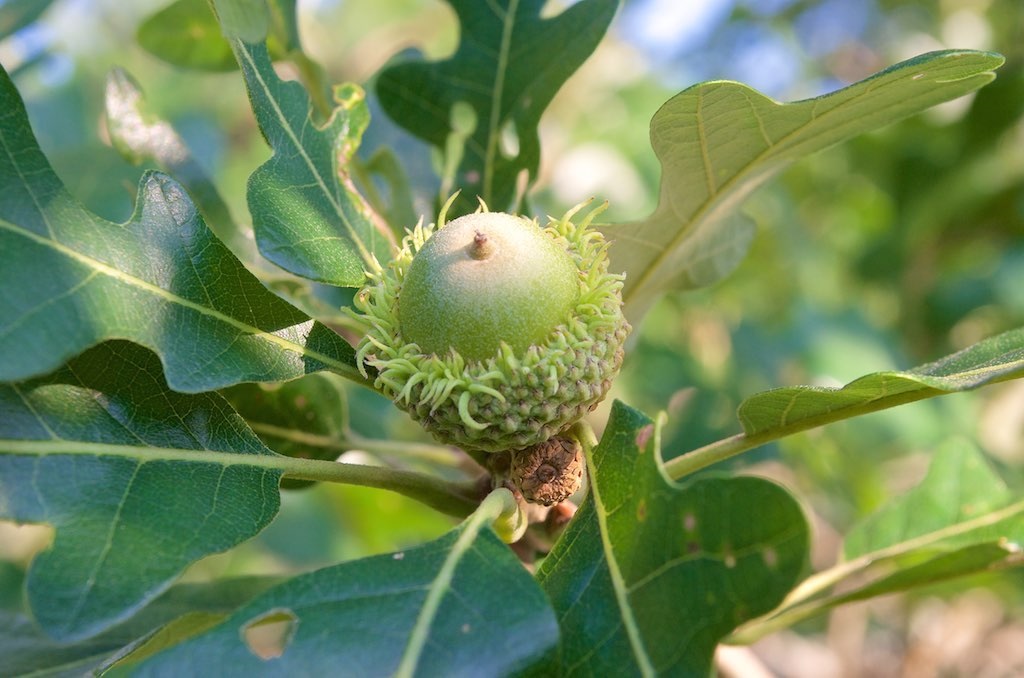
Wildlife
Oak trees are valuable food and shelter sources for a variety of wildlife. From small insects that feed on the leaves to bird and squirrels that feed on the acorns and nest in the branches, the oak is a versatile contributor to the ecosystem.
Acorns are one of the most vital food sources for a variety of wildlife. Some wildlife, like deer, bears and certain bird species may even adjust their migration patterns to centre themselves in oak-dominated forests when acorns are more abundant. Since acorns typically fall to the ground during fall and winter when other food sources are depleted, they are an even more vital source of sustenance.
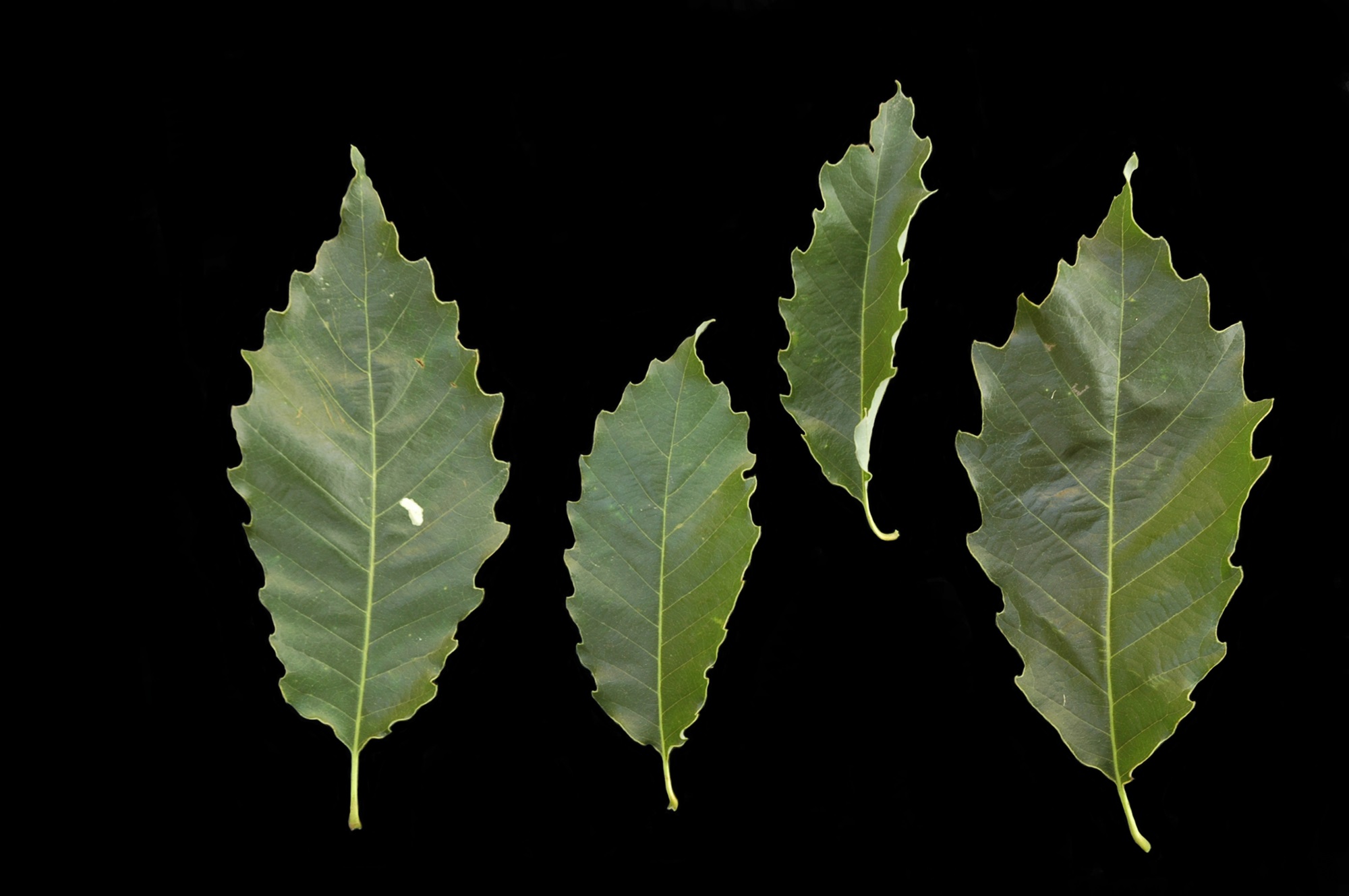
Indigenous Uses
Many Indigenous communities used the oak for medicinal, food and crafting purposes. The bark was often brewed into a tea to help with colds and asthma relief; the tea could also be applied topically to improve dry skin. The wood of oak trees was used for baskets, firewood, lumber, weapons and household items like spoons and bowls.
Acorns were a staple food source in many Indigenous communities. Once harvested, they were typically ground into a flour to be incorporated into bread, cakes, soups and other recipes. They were often paired with a protein source like venison or salmon. Some acorn species are sweet enough to be eaten whole once steamed or boiled.
Today, acorns and oak trees continue to be valued in Indigenous circles. Acorn flour can be made using more modern technology, but the traditional process of grinding the acorn is still sometimes ceremonially conducted to honour the rich history of the practice.
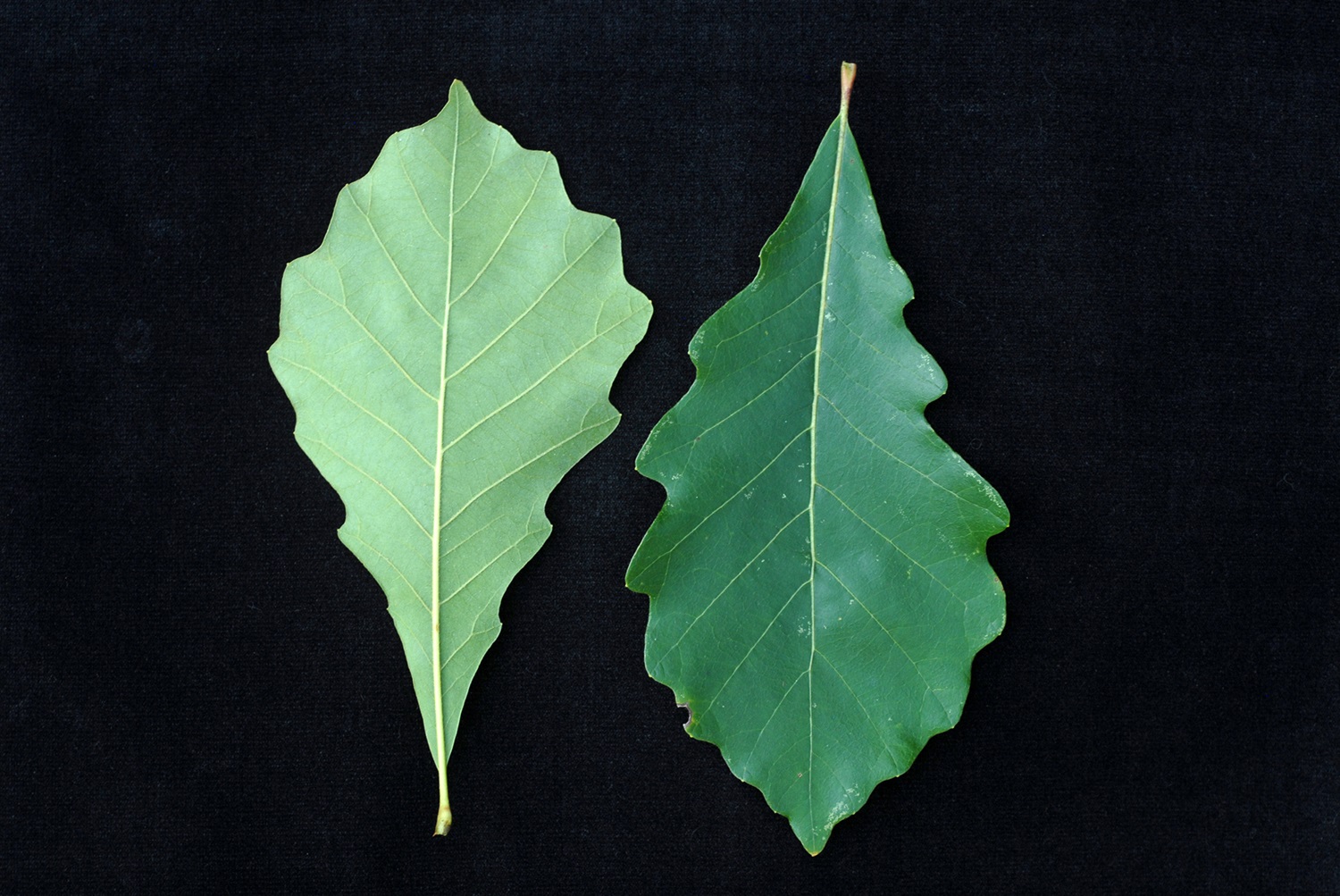
Uses
Commercial uses for oaks include flooring, furniture, fencing, lumber and firewood. Construction materials like railway ties or wood pallets are often made from oak. These trees are also constructed into barrels for wine making, since the wood adds natural flavour to the wine. Many oaks are often planted as ornamental trees in urban areas.
Threats
The Shumard oak is classified as a species of special concern by the Committee on the Status of Endangered Wildlife in Canada (COSEWIC).
Oak wilt presents a significant threat to oak trees, especially the northern red oak, in Ontario. A disease caused by the fungus Bretziella fagacearum, oak wilt results in oak tree death within a single season. It is spread through root grafts or beetles carrying fungal spores, often presenting with discoloured leaves, cracked trunks and premature leaf shedding.
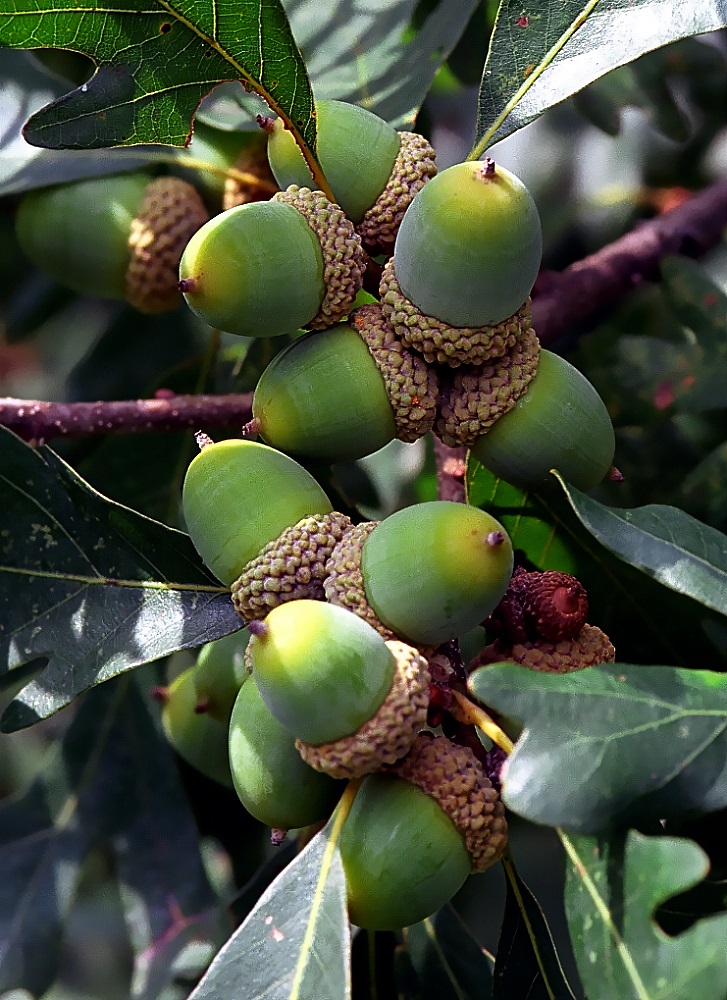

 Share on Facebook
Share on Facebook Share on X
Share on X Share by Email
Share by Email Share on Google Classroom
Share on Google Classroom

